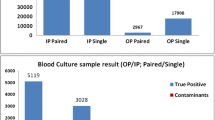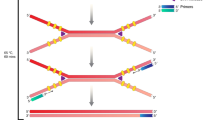Abstract
Bacterial contamination of blood components is the major infectious risk in transfusion medicine. Since platelets should be stored at room temperature that makes them an excellent growth medium for bacteria; it is mentioned as a major problem in transfusion medicine. Transfusion risk of a bacterial contaminated platelet concentrate is higher than viral pathogen such as HIV, HBV, HCV and HTLV. The objective of this study was to evaluation of the sensitivity and specificity of use of glucose and pH for bacterial screening of platelet concentrates compared to the Bact/Alert. 1332 platelet concentrates were screened by the Bact/Alert system for aerobic and anaerobic bacterial contamination. Bacterial contamination was also evaluated by using urine reagent strips (Multistix10 SG Bayer) and culture methods. Moreover PH screening with a pH meter (Metrohm 744 Swiss) and glucose was also used for detection of bacterial contamination. The rate of bacterial contamination detected by the Bact/Alert system in platelet concentrates was 25 in 1332 (1.9 %). It contained 15 (1.1 %) for aerobic bacteria and 10 (.8 %) for anaerobic bacteria. 226 of 1332 were considered as containing bacteria by using urine reagent strips. Six of the 226 units were also positive by the Bact/Alert system. Three of those units were culture positive for aerobic bacteria and three for anaerobic. The result of platelet concentrates that underwent pH screening by use of pH meter and a pH portion of urine reagent strips was the same. The sensitivity and specificity of considering glucose alone for detection of bacterial contamination were 12 and 98 % respectively. For pH alone, these were 24 and 83 %. For glucose and/or pH, these were 24 and 83 %; and for combination of glucose and pH, these were 12 and 98 %. Our results showed use of glucose/pH strips would improve the safety of blood products and should be encouraged.
Similar content being viewed by others
References
Jacobs MR, Palavecino E, Yomtovian R (2001) Don’t bug me: the problem of bacterial contamination of blood components—challenges and solutions. Transfusion 41:1331–1334
Walther-Wenke G (2008) Incidence of bacterial transmission and transfusion reactions by blood components. Clin Chem Lab Med 46:919–925
Ribault S, Harper K, Grave L, Lafontaine C, Nannini P, Raimondo A et al (2004) Rapid screening method for detection of bacteria in platelet concentrates. J Clin Microbiol 42:1903–1908
McKane AV, Ward N, Senn C, Eubanks J, Wessels L, Bowman R (2009) Analysis of bacterial detection in whole blood-derived platelets by quantitative glucose testing at a University Medical Center. Am J Clin Pathol 131:542–551
Yomtovian R (2004) Bacterial contamination of blood: lessons from the past and road map for the future. Transfusion 44:450–460
Fisk J, Pisciotto P, Snyder E, Perrota P (2007) Platelets and related products. In: Hillyer CD, Silberstein LE, Ness PM, Anderson KC, Roback JD (eds) Blood banking and transfusion medicine basic principle and practice. Churchill Livingstone Elsevier, Philadelphia, pp 308–341
McDonald C (2006) Bacterial risk reduction by improved donor arm disinfection, diversion and bacterial screening. Transfus Med 16:381–396
Werch J, Mhawech P, Stager C, Banez E, Lichtiger B (2002) Detecting bacteria in platelet concentrates by use of reagent strips. Transfusion 42:1027–1031
Brecher ME, Hay SN (2005) Bacterial contamination of blood components. Clin Microbiol Rev 18:195–204
Satake M, Mitani T, Oikawa S, Nagumo H, Sugiura S, Tateyama H et al (2009) Frequency of bacterial contamination of platelet concentrates before and after introduction of diversion method in Japan. Transfusion 49:2152–2157
Benjamin R (2008) Bacterial culture of apheresis platelet products and the residual risk of sepsis. ISBT Sci Ser 3:133–138
Davenport R, Mintz P (2007) Transfusion medicine. In: McPherson RA, Pincus MR (eds) HenryÕs clinical diagnosis, pp 669–684
Pietersz R, Engelfriet C, Reesink H, Wood E, Winzar S, Keller A et al (2007) Detection of bacterial contamination of platelet concentrates. Vox Sang 93:260–277
Ezuki S, Kawabata K, Kanno T, Ohto H (2007) Culture-based bacterial detection systems for platelets: the effect of time prior to sampling and duration of incubation required for detection with aerobic culture. Transfusion 47:2044–2049
Yazer MH, Triulzi DJ (2005) Use of a pH meter for bacterial screening of whole blood platelets. Transfusion 45:1133–1137
Mitchell K-MT, Brecher ME (1999) Approaches to the detection of bacterial contamination in cellular blood products. Transfus Med Rev 13:132–144
Acknowledgments
This study was supported in part by a Grant from the Blood Transfusion Research Center, High Institute for Research and Education in Transfusion Medicine, Tehran, Iran.
Authors’ Contributions
Study concept and design: Hossin Timori Naghadeh, Dabir Moghadam. Acquisition of data: Hossin Timori Naghadeh, Dabir Moghadam, Farhad Razjou. Analysis and interpretation of data: Hossin Timori Naghadeh, Dabir Moghadam. Drafting of the manuscript: Hossin Timori Naghadeh. Statistica analysis: Hossin Timori Naghadeh, Dabir Moggadam. Administrative, technical, and material support by Hossin Timori Naghadeh. Critical revision of the manuscript for important intellectual content: Hossin Timori Naghade, Shirin Ferdowsi.
Author information
Authors and Affiliations
Corresponding author
Rights and permissions
About this article
Cite this article
Razjou, F., Naghadeh, H.T., Ferdowsi, S. et al. Evaluation of the Sensitivity and Specificity of Use of Glucose and pH for Bacterial Screening of Platelet Concentrates Compared to the Bact/Alert. Indian J Hematol Blood Transfus 33, 116–120 (2017). https://doi.org/10.1007/s12288-016-0660-4
Received:
Accepted:
Published:
Issue Date:
DOI: https://doi.org/10.1007/s12288-016-0660-4




